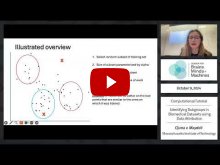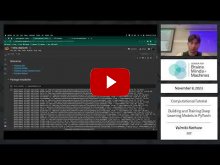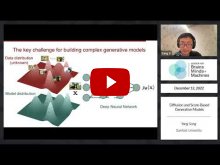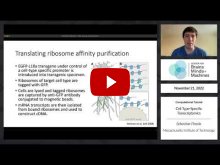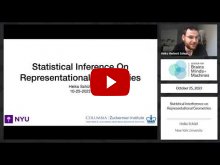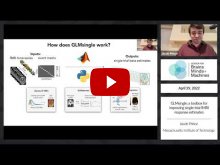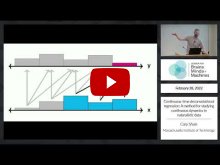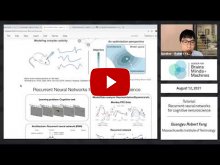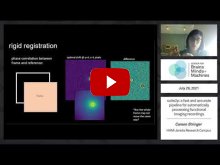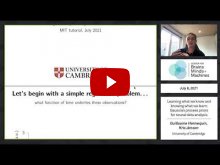Computational Tutorials Recordings
Recordings
Oct 9, 2024
Understanding how training data influences model predictions ("data attribution") is an active area of machine learning research. In this tutorial, we will introduce a data attribution method (datamodels: https://gradientscience.org/datamodels-1/) and explore how it can be applied in the life...
Nov 8, 2023
BCS Computational Tutorial Series with Valmiki Kothare, MIT.
In this tutorial, we will use deep learning on EEG and EMG mice data to predict sleep stages (Wakefulness, REM, Non-REM). We will walk through an example Jupyter Notebook in which we load a dataset, preprocess it, build a "residual-...
Apr 28, 2023
Tutorial on FindingFive
FindingFive is a non-profit organization dedicated to supporting behavioral scientists’ web-based research by making it easy and cost-effective to implement experiments and collect data. With FindingFive, researchers can easily implement web-based experiments, recruit...
Dec 12, 2022
Generating data with complex patterns, such as images, audio, and molecular structures, requires fitting very flexible statistical models to the data distribution. Even in the age of deep neural networks, building such models is difficult because they typically require an intractable normalization...
Nov 21, 2022
Tutorial on transcriptomic assays - TRAP and snRNA-seq sequencing with Sebastian Pineda
High-throughput sequencing assays have become ubiquitous and indispensable tools in molecular neurobiology. They provide a means to investigate gene expression, dissect gene interactions and pathways, and...
Oct 25, 2022
Representational similarity analysis (RSA) is a popular method for comparing representations when a mapping between them is not available. One important comparison RSA is used for is between neuronal measurements and models of brain computation like deep neural networks. RSA is a two step process,...
Apr 28, 2022
Advances in modern artificial intelligence have inspired a paradigm shift in human neuroscience, yielding large-scale functional magnetic resonance imaging (fMRI) datasets that provide high-resolution brain responses to tens of thousands of naturalistic visual stimuli. Because such experiments...
Apr 1, 2022
In this tutorial, Jeremy Schwartz will walk us through the features and capabilities of ThreeDWorld, a high-fidelity, multi-modal platform for interactive physical simulation.
Next, Seth Alter will conduct a tutorial lab session.
The repository is available here (please note that it is not needed...
Feb 28, 2022
Abstract: Naturalistic experiments are of growing interest to neuroscientists and cognitive scientists. Naturalistic data can be hard to analyze because critical events can occur at irregular intervals, and measured responses to those events can overlap and interact in complex ways. For...
Aug 30, 2021
Robert Guangyu Yang, MIT
In this hands-on tutorial, we will work together through a number of coding exercises to see how RNNs can be easily used to study cognitive neuroscience questions. We will train and analyze RNNs on various cognitive neuroscience tasks. Familiarity of Python and basic...
Jul 29, 2021
The combination of two-photon microscopy recordings and powerful calcium-dependent fluorescent sensors enables simultaneous recording of unprecedentedly large populations of neurons. While these sensors have matured over several generations of development, computational methods to process their...
Jul 8, 2021
Guillaume Hennequin, Kris Jensen - University of Cambridge
Colab notebooks:
Introduction to FA and GPFA as probabilistic generative models
Fitting an example data set from a primate reaching task with GPFA
Additional papers and resources
Rasmussen & Williams (2006) - The standard textbook...

